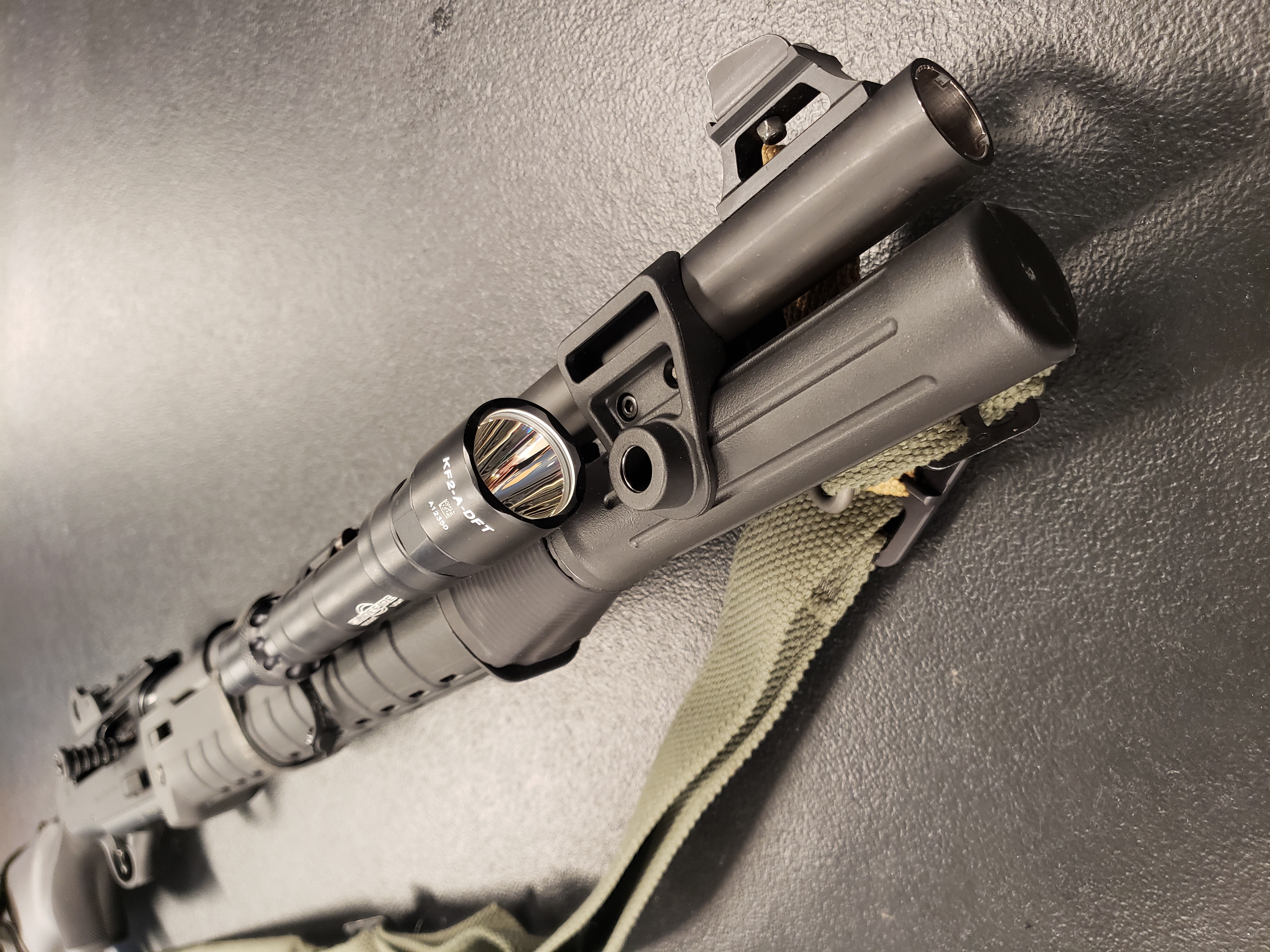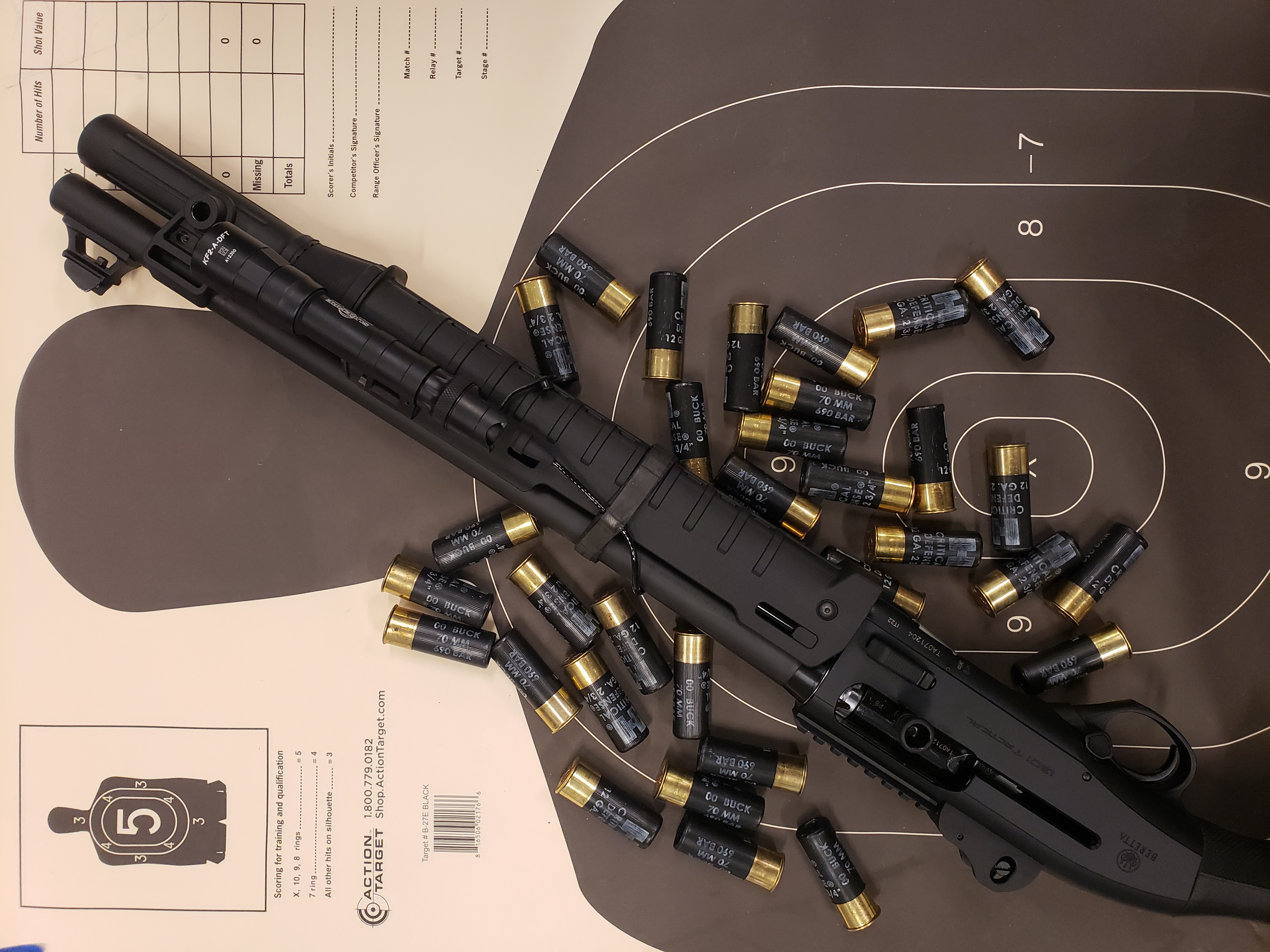An after-action report is conducted after most courses here at Fieldcraft Survival. They help refresh the students’ memory with what resonated with them and help the instructors better improve their practice. Not long after the last Introduction to Defensive Shotgun Course in Aberdeen, NC taught by our top shotgun instructor Gerry Young, a comment was made that a more detailed gear list with instructor preferences be provided prior to signing up so students can have the most optimal experience. The modern defensive/survival shotgun is not a picky date and it doesn’t require a lot of pampering. However, it will absolutely benefit from having just a few well-thought out accessories and some trigger time learning its nuances. With more shotgun courses on the calendar for this year, I decided to follow through for the students in this week’s blog.
Sling

Just as pistols need good holsters and knives need good sheaths, a defensive shotgun should have a proper sling. In courses I’ve taught and attended as a student, I’ve seen every possible sling you can imagine from single point, to double, to the 90’s favorite 3 point. My preference is an adjustable 2 point like the Blue Force Gear Vickers, Viking Tactics, or GBRS Second Best Sling. There is a time and a place for a single point when standing sentry but for the average civilian or those looking to cover ground with a shotgun, a double point allows for cinching next to the body for mobility, “necklace” wear, or cross body for hands free work with other tools. Forward mounting can be to 9 o’clock or 6 if a righty (3 o’clock for lefties) and QD mounts are not necessary but nice. Often overlooked with slings is comfort and the texture of sling webbing can cause serious discomfort directly against the neck. Unfortunately, you won’t likely have a chance to test this so refer back to my three recommendations.
Ammo Management
A good pump shotgun will hold anywhere from 3 rounds on up. My Mossberg 590A1 is a biggun’ that holds 8 plus 1 and my Beretta 1301 Tactical has a 7 shot tube. Shotguns run out of ammunition quickly and especially my Berettas since they run fast; really fast. When you train with a modern defensive shotgun in a course like ours, you realize reloading is a constant practice. Before you can chamber load above or below the receiver or feed the pig through the magazine tube, you need to access that ammo from somewhere. During courses, students will wear AR mag pouches filled with Esstac Shotgun cards and others will wear the vests with dedicated elastic loops. Both Gerry and I use Spiritus Systems that are modular with inserts that let us swap out for AR or pistol mags or in this case, shotgun shells. A simple dump pouch can hold a lot of birdshot for high volume strings of fire. In past courses, Gerry and I have seen folks stuff BDU pants pockets, sling laptop bags, and utilize sidesaddle and buttstock carriers. We don’t like slings that have ammo loops sewn in as they create a heavy pendulum to deal with when taking accurate slug shots at distance. Regardless what you use, become proficient with it and practice loading from those draw points with dummy rounds.
Proper Ammunition
A good defensive shotgun is capable of firing 1 ounce solid slugs, 8-9 pellets of buckshot, and various loads of birdshot. The firearm is capable of dropping any animal in North America if you have to put food on the table. We’ve seen some great ammunition like Federal Flite-Control buckshot rounds and Truball Solid Copper penetrators. We’ve also seen some budget ammunition on the firing line with primer issues. It is absolutely vital you test your firearm with the ammunition you intend to use on the course. Some of the light primer strikes found with certain firearms were a combination of issues between shotgun and ammo. That same ammo used in my Mossberg worked despite failing in the student’s shotty. If you are paying for training or trusting your life to a shotgun, feed it good ammunition. We get it, the shotgun isn’t the precision rifle beauty queen supermodel that needs a steady healthy diet but it also shouldn’t be forced to function with garbage budget bin shells. Even a bad date doesn’t deserve to eat junk food.
Proper Shotgun Fit
Shouldering a shotgun in the pocket of your shoulder is more the practice of the bird hunter or trap/skeet shooter. To mitigate recoil, the shotgun is best placed more centerline to the body. A standard length of pull stock is often too long for those not equipped with gorilla arms. This makes a youth stock ideal. A couple of my shotguns have Magpul SGA stocks with adjustable spacers. At 6’ tall, I run that stock with a couple spacers and it is at the right length for a natural grip and weld against my body. If you run an optic on your shotgun, make sure you apply the same concept of a good cheek weld for a rifle. You should be able to pull the shotgun up to your line of sight and the sights or red dot should be in your field of view without overly adjusting the position of your face. If you don’t have to spend time looking for your sights/dot, you’ll speed up your shots and transitions from one target to another.
Weapon Light and Red Dot (Optional)

A weaponlight belongs on any firearm you have for self defense. You can’t assume you will only need your firearm in good lighting conditions and no light/limited light will happen throughout a given 24 hour period. Make sure you keep your weaponlight and other accessories properly torqued down and use a paint pen to put witness marks on the screws. Plenty of bolt-on parts have come loose on our courses. Also, red dots are here to stay and with modern technology, they are capable of withstanding the recoil of a 12 gauge. During our last course, we used red dots while shooting clay pigeons out of the air and they are just as fast as a single bead on a vent-rib barrel. You don’t need a red dot but you’ll appreciate one if you decide to use slugs out to distances that the target is obscured completely by your front sight ramp.
Both Gerry and I want you to have a great experience training with the shotgun. We strongly believe it is a viable defensive and survival tool and with the right training, there will be times when it will be superior to both pistols and rifles. Don’t just purchase a shotgun and haphazardly take a class. Select the right gear, train with it, take care of it, and it will take care of you.
